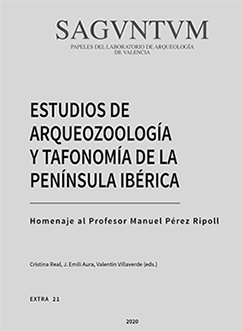Patrones de subsistencia de los grupos mesolíticos en la Cueva de El Mazo (Asturias)
Paraules clau:
arqueozoología Resum
Resum
The subsistence of hunter-gatherer-fisher groups during the Mesolithic in the Cantabrian coast is characterized by a wide diversity of exploited resources, including mammals (marine and terrestrial), birds, fishes, marine molluscs, crustaceans and echinoderms, but above all it is remarkable the intensification in the exploitation of some of these resources, such as the marine molluscs, in parallel to particular changes in the exploitation of terrestrial mammals, specifically ungulates. Recent excavations in the shell midden of El Mazo cave (Asturias), with a continuous stratigraphic sequence that covers most of the the regional Mesolithic (8.9 to 7.6 cal ka), have provided a significant amount of biological remains. Here, the archeozoological and taphonomic study of the macromammal remains from the stratigraphic units 100 to 107 is presented. The results show the palaeoconomic decisions adopted by those human groups, their diet and exploitation of different ecological environments, seasonality of the occupations and, also, reveal the different biostratinomic and diagenetic alterations that took part during the formation of the shell midden.
 Descàrregues
Descàrregues
Descàrregues
Publicades
Com citar
-
Resum430
-
PDF (Español)262
Número
Secció
Llicència

Aquesta obra està sota una llicència internacional licencia de Creative Commons Reconocimiento-NoComercial-SinObraDerivada 4.0 Internacional.



